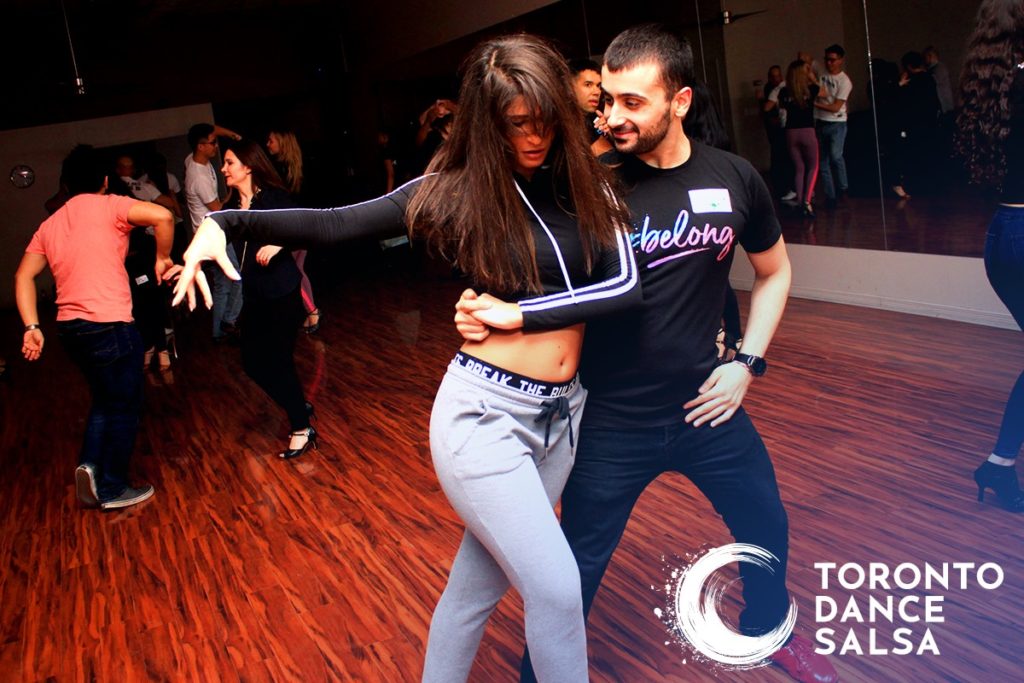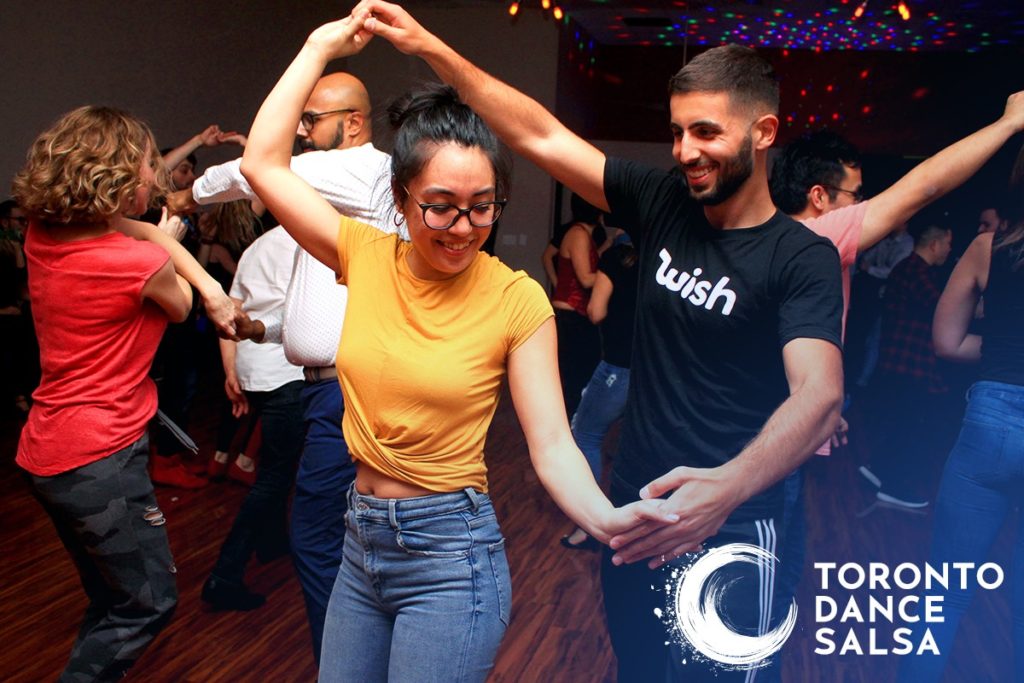There are many Salsa styles to pick from and below are the 3 most popular style that every Salsa dancer needs to learn.
L.A. Style Salsa (Dancing “On 1”)
L.A. style salsa, usually danced “On 1”, is a flashier version of New York style salsa moves. Dancers use lots of dips, flips, drops and tricks which make for a great show to watch. The back and forth Mambo basic, again in a linear motion, is utilized with the leader breaking forward on 1. Because the dominating beat is the 1 beat which is the most accented beat in the series, the dancing looks and feels powerful and fast. L.A. style salsa has incorporated many other types of dancing including jazz, hip hop, and ballroom which is challenging for the dancers and entertaining for the viewers. Similar to the New York style salsa, many of the moves are created from cross-body lead variations. Shines are an important component of this type of salsa with complicated, speedy footwork and jazzy moves.
New York Style Salsa (Dancing “On 2”, Mambo Salsa, Eddie Torres Style)
Salsa on 2, commonly referred to as “Mambo”, is a style of salsa first introduced by Eddie Torres in New York in the 1960s. Technically speaking, dancing “On 2” refers to the beat the dancers break forward on. Followers will break forward with the left foot on the 2 and leaders will break forward on the 6. New York style salsa is distinguished by smooth, controlled, highly technical movements that are elegant, graceful, flow well and are not rushed. The style is very linear and many of the turn patterns evolve from cross body lead variations. Multiple spins, complicated footwork, Afro Cuban body movement and shines are a must. Dancing “On 2” is rhythmically more difficult as it is easier to hear the 1 beat and break on this beat. Many dancers learn to dance “On 1” first and then train “On 2” as they feel it is more musically and rhythmically rich and complex.
Casino Rueda Style Salsa (Rueda de Casino, Salsa Rueda)
Casino Rueda (meaning salsa wheel) is a group dance which originated in Havana , Cuba in the 1960s by a group called Guaracheros de Regla. In this dance, couples dance in a circle while one dancer, designated as “The Caller”, provides hand signals or calls out the moves which will be executed by every couple in the circle simultaneously. Many of the Casino moves involve swapping or switching partners which makes the dance tricky to execute and spectacular to watch. Rueda is very popular in Cuba and Miami and has gained popularity all over the world. Cuban Rueda tends to be more playful with easy-to-follow fun moves while Miami Rueda has many complicated turn patterns and requires memorization and skill to execute. Many callers will know anywhere from 150-300 moves so memory, speed and accuracy is a key to ensuring the circle is not broken. The advantage of learning Casino Rueda is that all moves learned in the Rueda circle can be danced one on one with a partner adding to a dancer’s repertoire of moves.
I cannot wait to welcome you with a high five, a big hug and have you join Toronto Dance Salsa. Click here to check our current schedule.
There are so many other tips I can give and I would love to hear from you. If there is a post you want me to write about, please get in touch with me through Instagram (torontodancesalsa), Twitter (#torontodancesalsa), Facebook (Toronto Dance Salsa) or email [email protected].


